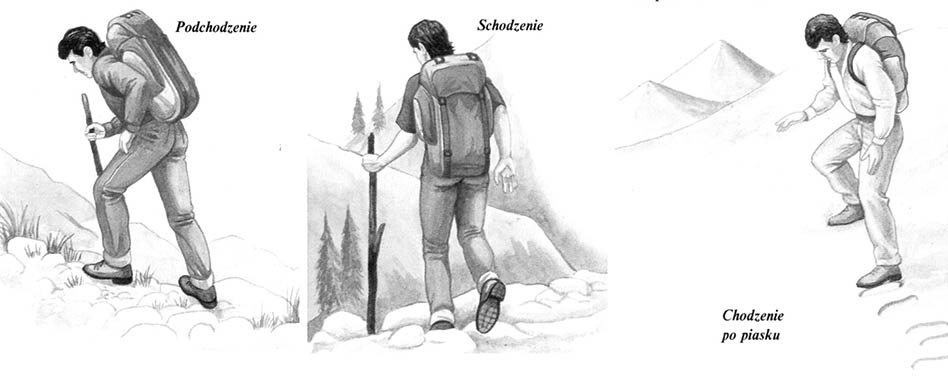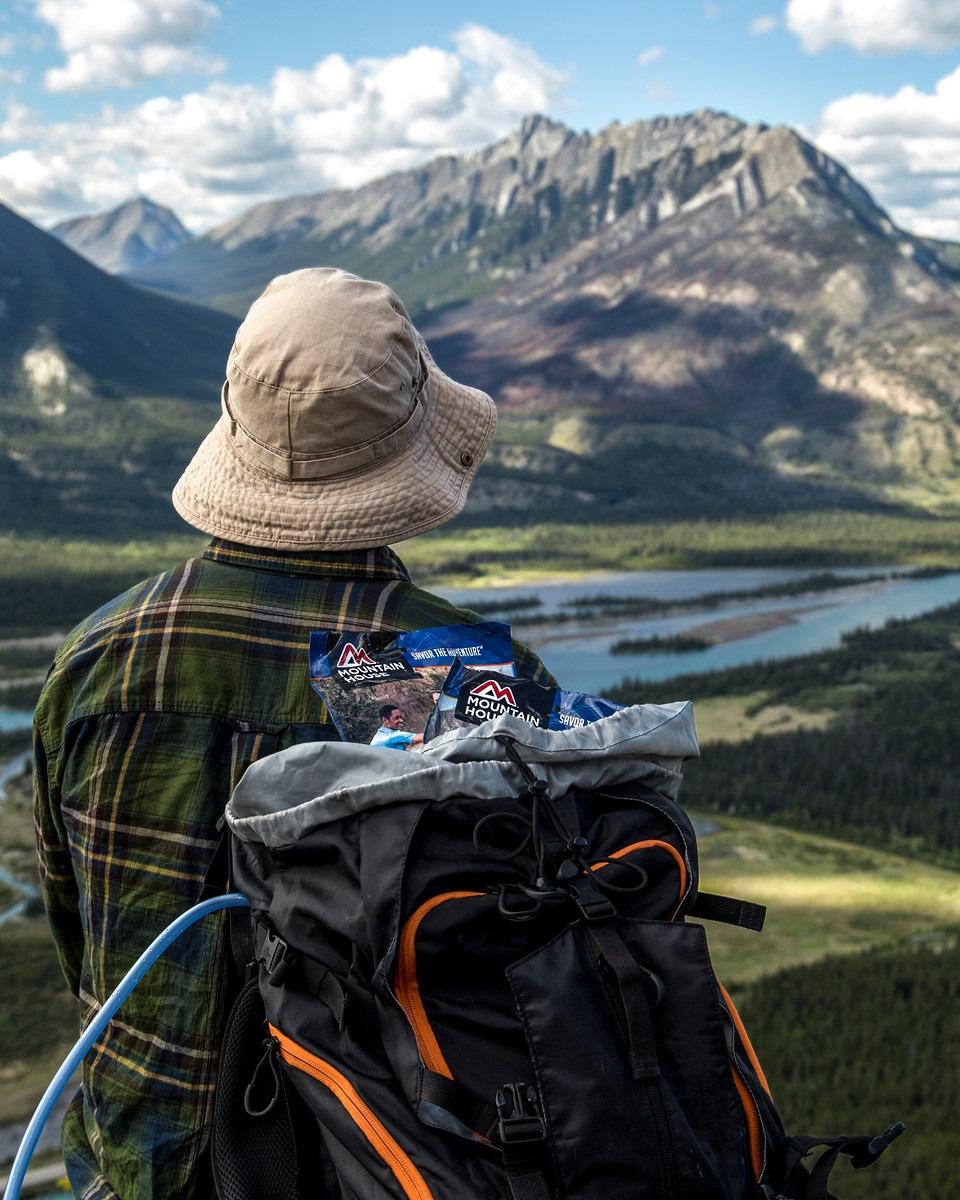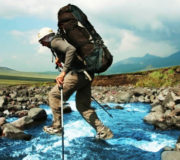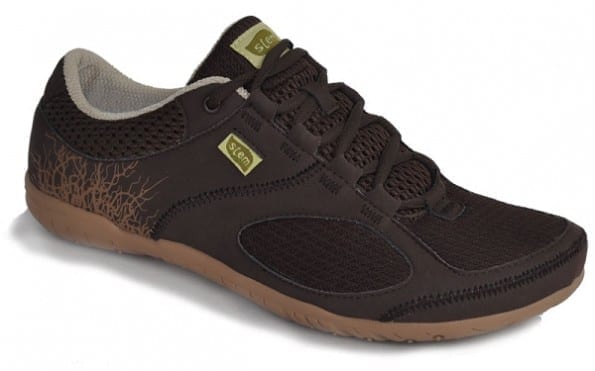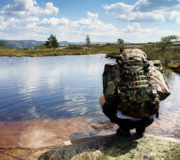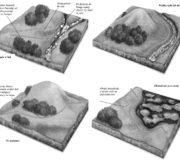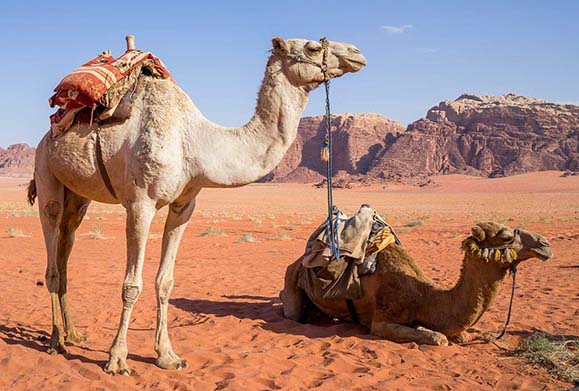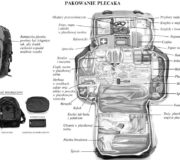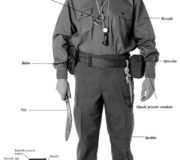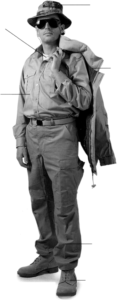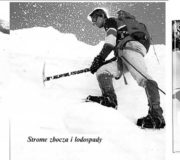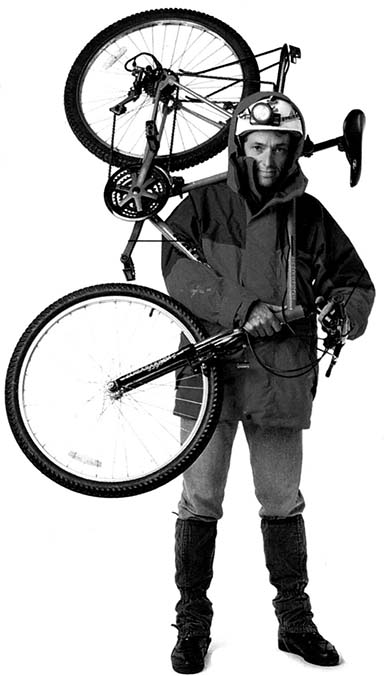Przemierzanie pieszo znacznych odległości w terenie, na dodatek z obciążeniem, zdecydowanie różni się od chodzenia po mieście. W grupie tempo marszu musi być dostosowane do możliwości najwolniejszego piechura. Przed wyruszeniem w teren należy szczegółowo przygotować plan i ekwipunek oraz ustalić trasę. Na początku wyprawy najlepiej zatrzymywać się co 10 minut, aby poprawić skarpety, buty, ubranie czy plecak, oraz sprawdzić kierunek marszruty i formę wszystkich uczestników. Potem należy narzucić równe, niezbyt forsowne tempo i zwalniać przy pokonywaniu przeszkód, na przykład wzniesienia.
Maszeruj równym krokiem, nie za szybko. Wymachuj, ale niezbyt energicznie, ramionami, aby zachować rozpęd i łatwiej utrzymywać równowagę.
Staraj się stawiać i wyciągać nogi bez wysiłku. Utrzymuj równe, niezbyt forsowne tempo, którym możesz maszerować dość długo bez zadyszki i nadwerężania sił. Rób regularne postoje, wykorzystując je na odpoczynek i sprawdzenie ekwipunku.
Podchodzenie
Stawiaj mniejsze kroki podchodząc pod górę, zachowując ten sam rytm. Pochyl się do przodu i pamiętaj, by stawiać całe stopy na ziemi.
Schodzenie
Przy schodzeniu wydłuż krok i lekko odegnij się do tyłu. Staraj się nie iść szybciej. Podczas schodzenia bardzo obciąża się stawy kolanowe, zwłaszcza niosąc duży plecak.
Chodzenie po piasku
Idąc po miękkim zapadającym się piasku należy powoli stawiać stopy, starając się możliwie równomiernie rozłożyć ciężar. Podchodząc bokiem unika się zakopywania czubków butów.
Idąc w większej grupie powinno się wysłać na rekonesans kilku lepszych piechurów, którzy sprawdzą, gdzie wiedzie dalsza droga, rozpoznają trudności oraz możliwości ominięcia przeszkód. Te same osoby mogą pod koniec marszruty znowu pójść szybciej, aby znaleźć odpowiednie miejsce na obozowisko, rozbić namioty lub wybudować szałasy, przynieść wodę i rozpalić ognisko. Należy jednak zawsze pamiętać, by z główną grupą pozostało kilka sprawnych osób, które mogą zaopiekować się słabszymi, chorymi bądź rannymi.
Grupa w czasie marszu powinna trzymać się razem, z wyjątkiem kilku sprawnych piechurów, którzy powinni zrobić rekonesans, zwłaszcza wtedy gdy jest to nieznany teren. Dzieci i osoby słabsze nigdy nie powinny zostawać z tylu. Lider winien utrzymywać równe i niezbyt forsowne tempo, aby każdy członek grupy mógł go dotrzymać.
Dzieci nie powinny wybiegać przed czoło grupy, ani wlec się noga za nogą daleko z tyłu.
Tempo marszu grupy musi być dostosowane do możliwości najwolniejszych członków
Każdej osobie słabej lub chorej powinna towarzyszyć jedna osoba w pełni sprawna. Taka dwójka musi iść w środku grupy, aby w którymś momencie nie pozostała z tylu
Przewodnik musi iść równym i niezbyt szybkim krokiem. Po przejściu przeszkody powinien zatrzymać się czekając na innych.
